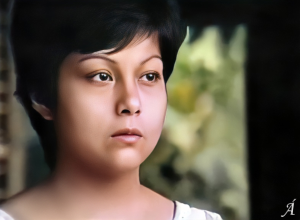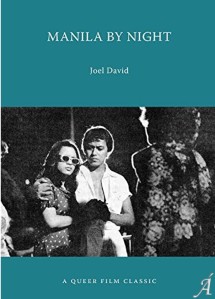[Click here (recommended) for desktop mode.]
Krimen: Kayo ang Humatol
English Title: Crime: You Be the Judge
Year of Release: 1974
Director: Jun Raquiza
Screenwriter: Jose F. Sibal from a story by Jun Raquiza
Producer: Ilocandia Productions
Cast: Jun Raquiza, Gina Pareño, Marianne de la Riva, Maribel Aunor, Shongho, Omar Camar, Tony Gosalvez, Edison Lee, Bob Breult, Eddie Villamayor, Susanna Navarro, Leila Hermosa, Nick Romano, Arnold Mendoza
Newly freed after a stint in jail, Angel discovers that his wallet has been lifted by underage pickpockets. He tracks the thieves to their mastermind Toni, a tomboy who dutifully returns what they stole. As Toni and her den of petty criminals begin to get fond of Angel, he hooks up with Myra, an affluent but rebellious daughter whose parents abandoned her to her vices. Myra consorts with a number of shady characters who drag Angel into their conflicts with her and even attack Toni and her wards, leaving Angel with no choice but to exact revenge.
A deceptively light-handed exercise involving the reconfiguration of generic tropes that has unexpectedly worn well through its half-century of being more admired than respected, Krimen: Kayo ang Humatol refutes Bienvenido Lumbera’s claim that a “new” Philippine cinema started only two years later.[1] Even if we discount the self-serving coincidence that the award-giving critics group he founded was launched in 1976, Lino Brocka’s impactful two-in-a-row juggernaut had already made its mark before then, and enjoyed healthy competition from Ishmael Bernal, Celso Ad. Castillo, Elwood Perez, and the unfortunate Jun Raquiza, who died too early and whose well-received debut, Dalawang Mukha ng Tagumpay (Two Faces of Triumph, 1973)—which featured Nora Aunor in a first of a series of reflexive projects—can no longer be found. Raquiza nearly pulls off the director-actor stunt in Krimen, but had a sufficiently healthy appreciation for good performances to allow Gina Pareño to run away with the presentation. Despite her Toni being saddled with the generic containment of being condemned and punished for her several transgressions against her gender and civic tasks, she navigates the potentially awkward transitions with remarkable aplomb and makes her presence in Krimen an indispensable precursor to her masterstroke in Kubrador (The Bet Collector) over three decades later.
Note
[1] Professor Lumbera’s periodization, which has no end date, appears in at least two of his most widely quoted sources: “New Forces in Contemporary Cinema” from Revaluation: Essays on Philippine Literature, Cinema and Popular Culture (Index, 1984); and “Brocka, Bernal and Co.: The Arrival of New Filipino Cinema” from Re-Viewing Filipino Cinema (Anvil Publishing, 2011).
Back to top
Return to Canon Decampment contents
Go to alphabetized filmmakers list
Á!














 ORCID ID
ORCID ID 